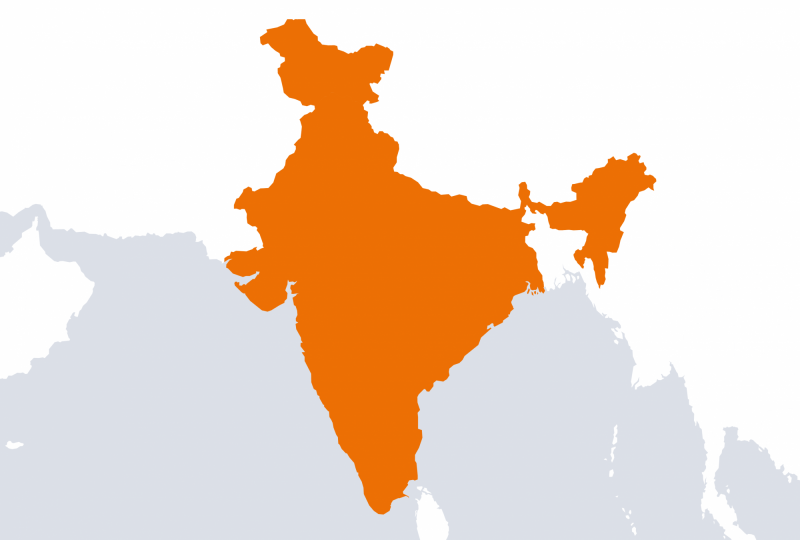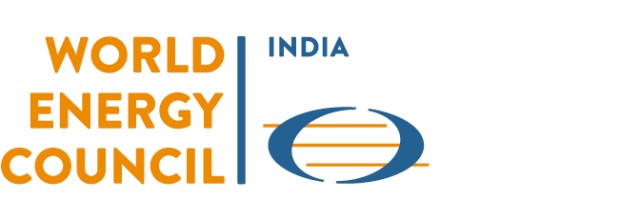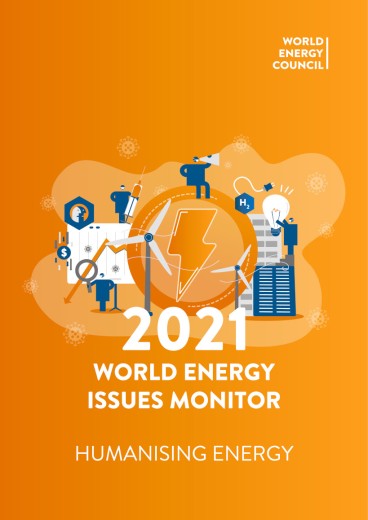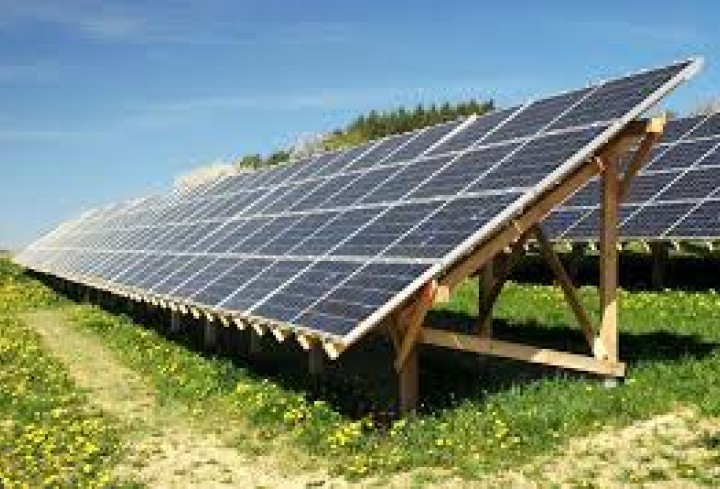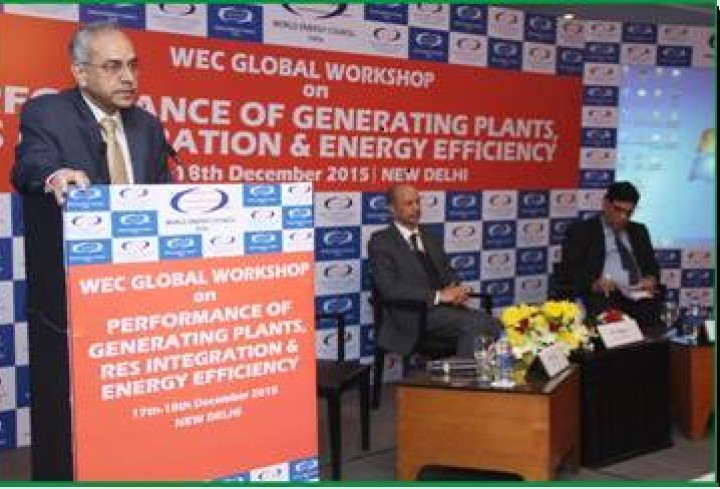The India Member Committee of the World Energy Council aims to be the foremost energy think-tank of the country and the voice of the sector. The organisation is truly representative of the Indian energy sector and contributes to advancing the energy goals of India. Its mission is to facilitate review, research and advocacy of energy technology, policy and strategy; to provide a platform for dialogue within the Indian energy sector; and to collaborate with member committees worldwide towards long term sustainable supply and use of energy. The India Member Committee brings together high-level players in the energy sector together to forge a better understanding of energy issues towards identifying and implementing sustainable, effective solutions.
Mr Gurdeep Singh, is Chairman & Managing Director of NTPC Limited, the largest power generating company in India. Mr Singh has nearly three decades of rich and varied experience in the sector. He started his professional journey with NTPC and his career spans both Indian and Multi-national Companies such as PowerGen, CLP, IDFC, CESC and AES, Gujarat State Electricity Corporation Limited (GSECL). During his tenure as Managing Director, GSECL, he conceptualized and implemented world's first canal top solar power plant. A mechanical engineer from National Institute of Technology, Kurukshetra, India, he has obtained leadership training from IIM Ahmedabad and global institutions like Saïd Business School-Oxford, Darden School of Management-Virginia, USA, Singapore Civil Services College-Singapore.
Energy in India
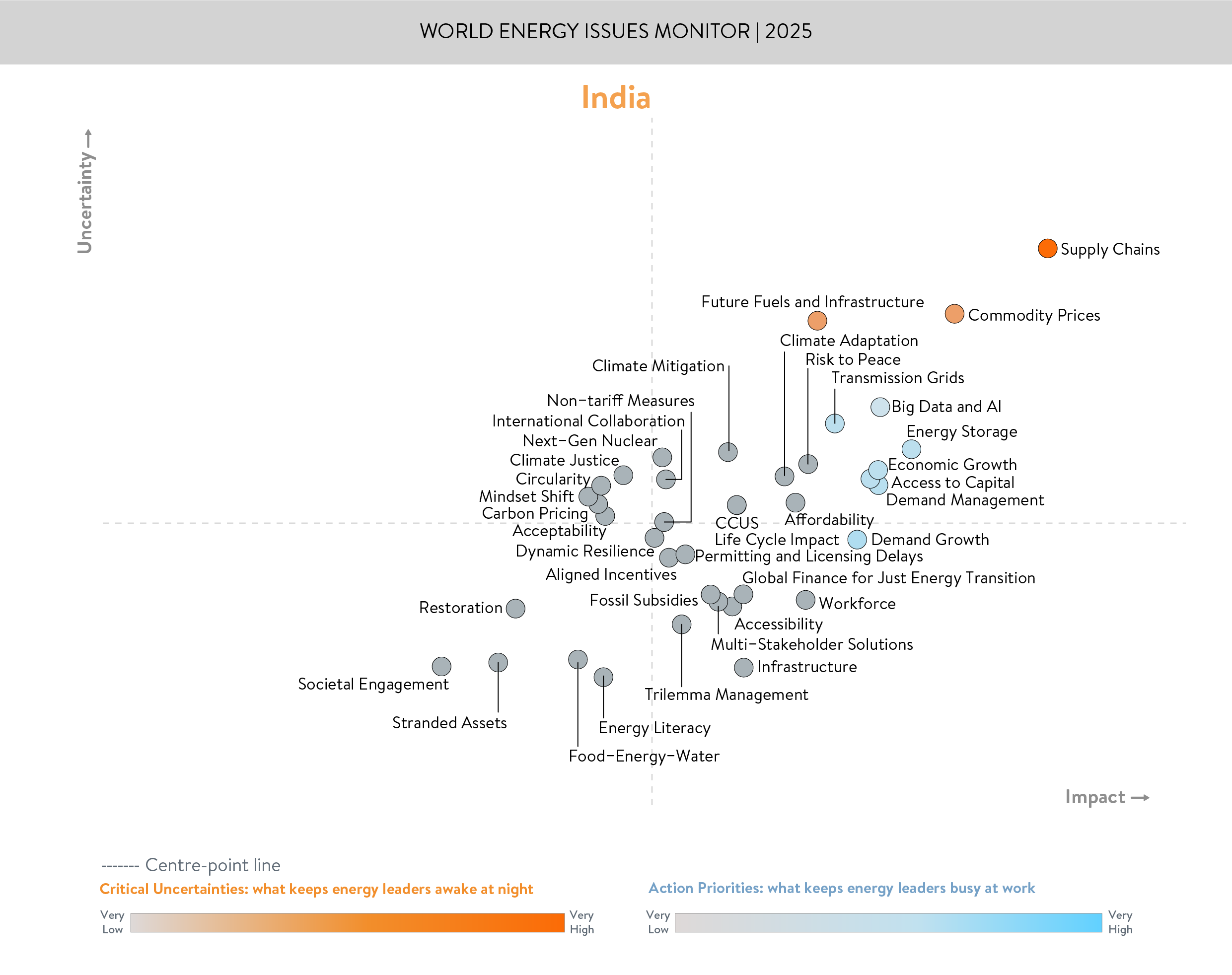
ENERGY ISSUES IN MOTION
In 2024, the World Energy Issues Survey results for India highlight a marked shift towards operational and market-related challenges. While the previous year saw a concentration around themes of climate action and affordability, the new India Energy Issues Map highlights a shift in focus. Supply chains, identified as the most critical uncertainty, highlight India's exposure to evolving global dynamics, whether geopolitical or environmental, emphasizing the need for greater resilience and adaptability. Future Fuels and Infrastructure also features prominently, highlighting India's ongoing efforts to scale up low-carbon alternatives while ensuring infrastructure is robust enough for mass adoption. Meanwhile, Commodity Prices remain a significant risk, affecting project financing, energy affordability, and long-term investments. Meanwhile, broader geopolitical themes such as Risk to Peace and International Collaboration retain their relevance, but with slightly moderated perceived uncertainty compared to last year.
To mitigate challenges in Supply Chain Resilience, the Government of India, in its Union Budget 2024-25, waived customs duties on 25 critical minerals and reduced base customs duties on two of them. This initiative aims to secure the availability of these essential materials for manufacturing in India.
To localize the supply chain for transmission equipment and reduce dependence on imports, the government launched the Production-Linked Incentive (PLI) scheme aimed at enhancing domestic manufacturing capabilities.
Future Fuels and Infrastructure – The Government of India has set an ambitious target of 100 GW nuclear power capacity by 2047, positioning nuclear energy as a major pillar in India's energy mix. Alongside this, green hydrogen is emerging as a critical enabler of deep decarbonisation across hard-to-abate sectors. Under the National Green Hydrogen Mission, India aims to develop at least 5 million metric tonnes (MMT) of green hydrogen production capacity annually by 2030, supported by an associated addition of around 125 GW of renewable energy capacity. This transformative initiative is expected to unlock over ₹8 lakh crore in investments, create more than 6 lakh jobs, and avert nearly 50 MMT of CO₂ emissions each year by 2030. The Mission will facilitate the demand creation, production, utilization, and export of Green Hydrogen. Under the Strategic Interventions for Green Hydrogen Transition Programme (SIGHT), two distinct financial incentive mechanisms – targeting domestic manufacturing of electrolysers and production of Green Hydrogen – will be provided under the Mission.
On the other hand, India’s action priorities in 2025 remain robust. Demand Management, Energy Storage, Transmission Grids, and Access to Capital are critical action areas for the country's energy transition. Below are some of the initiatives that reflect the government's commitment to addressing key advancing action priorities in India's energy sector:
- Demand Management: The Pradhan Mantri Surya Ghar Muft Bijli Yojana, the world’s largest domestic rooftop solar initiative, was launched to install rooftop solar plants for 10 million households, providing up to 300 units of free electricity per month, thereby managing residential electricity demand and promoting renewable energy adoption.
- Energy Storage: A policy for promoting pumped storage projects was introduced to enhance electricity storage capabilities, facilitating the integration of renewable energy sources into the grid.
- Transmission Grids: India is set to revolutionize its power transmission with the rollout of an Ultra High Voltage Alternating Current (UHV AC) Transmission System. Nine 1100 kV lines and ten substations have been identified for development by 2034.
- Under the new National Electricity Plan 2023 to 2032, the transmission network in the country will be expanded from 4.85 lakh ckm in 2024 to 6.48 lakh ckm in 2032. During the same period, the transformation capacity will increase from 1,251 GVA to 2,342 GVA.
Table 1: Five-Year Country Trend of Key Uncertainties And Action Priorities
|
Year |
Key Uncertainties |
Action Priorities |
|
2020 |
Extreme weather, Middle East Dynamics, Electric Storage, Climate change Management |
India’s Growth, Energy Efficiency, Renewable Energy |
|
2021 |
Commodity prices, Electric Storage, Cyber security, Economic growth, geopolitics |
Energy Efficiency, Renewable Energy, Market Design, Regulations |
|
2022 |
Commodity prices, Climate change Management, Electric storage innovation, Economic growth market design |
Quality energy access, Renewable Energies, Energy Efficiency, Digitalization |
|
2023 |
Climate adaptation, Climate mitigation, Climate reparations, Affordability and Fossil Fuel subsidies |
Demand Management, Accessibility, Supply chain, Domestic growth, Risk to peace |
|
2024 |
Supply Chains, Commodity Prices, and Future Fuels and Infrastructure |
Energy Storage, Economic Growth, Access to Capital, Demand Management, Demand Growth, and Transmission Grids |
Between 2020 and 2024, India's energy sector has experienced a dynamic evolution in key uncertainties and action priorities, mirroring global shifts and domestic imperatives. Initially in 2020, concerns were centred around extreme weather events, Middle East dynamics, and electric storage, reflecting vulnerabilities tied to external supply risks and emerging climate impacts. Electric storage, once positioned as a critical uncertainty in 2020 and 2021, gradually transitioned into an action priority by 2024, supported by policy interventions like the Ministry of Power's approval of Viability Gap Funding (VGF) guidelines for Battery Energy Storage Systems (BESS), allocating 40% capital expenditure support for 4 GWh BESS projects from 2023-24 to 2025-26. This demonstrates how technological advancements and supportive policies have moved storage solutions from uncertain innovation to an implementation focus.
Similarly, commodity prices, which consistently appeared as a key uncertainty from 2021 onwards, continue to pose challenges into 2024, suggesting persistent exposure to global market fluctuations. Over time, climate change management evolved from a broad uncertainty in 2020–2022 into more specific themes like climate adaptation, climate mitigation, and climate reparations by 2023. This refinement signals India's maturing strategy to tackle climate risks through targeted adaptation measures rather than broad ambitions alone. Initiatives such as the National Green Hydrogen Mission, which seeks to position India as a global leader in green hydrogen production, aiming to produce 5 million metric tonnes annually by 2030, have played a role in this transition.
India’s energy sector is accelerating on multiple fronts. In FY2024–25, India added a record 34 GW of new generation capacity – 29.5 GW of it from renewables – lifting total installed capacity to 472.5 GW (up from 249 GW in 2014). At the same time, the government has introduced landmark efficiency standards for buildings: the new Energy Conservation and Sustainable Building Code (ECSBC) for large commercial complexes and the Eco Niwas Samhita (ENS) for big residential projects (≥100 kW load) are expected to cut electricity use by about 18%. These codes mandate passive-design measures – natural cooling, ventilation, water–waste recycling, etc. – and can be adopted by states to improve building. All these developments are anchored in India’s strategic vision: achieve energy independence by 2047 and net-zero emissions by 2070, driving a rapid shift to clean, largely domestic energy sources while ensuring long-term energy security. Combined, these record capacity gains and policy reforms underscore India’s leadership and clear direction in the global clean-energy transition, balancing aggressive decarbonization with secure, resilient electricity infrastructure.
Acknowledgements
India Member Committee
Downloads
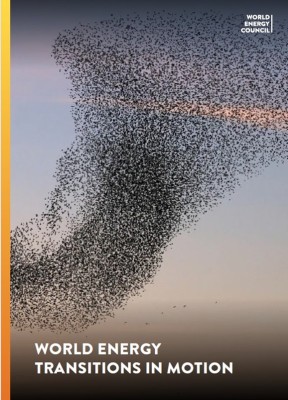
India Energy Issues Monitor 2025
Download PDF
World Energy Issues Monitor 2025
Download PDF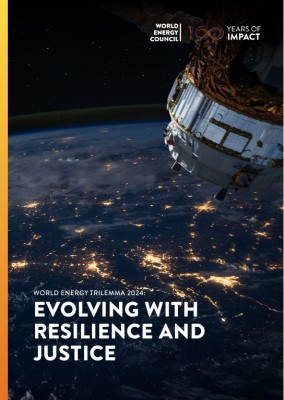
India World Energy Trilemma Country Profile
Download PDF
World Energy Trilemma Report 2024
Download PDF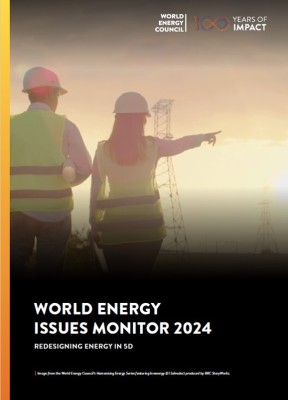
India Energy Issues Monitor 2024
Download PDF

